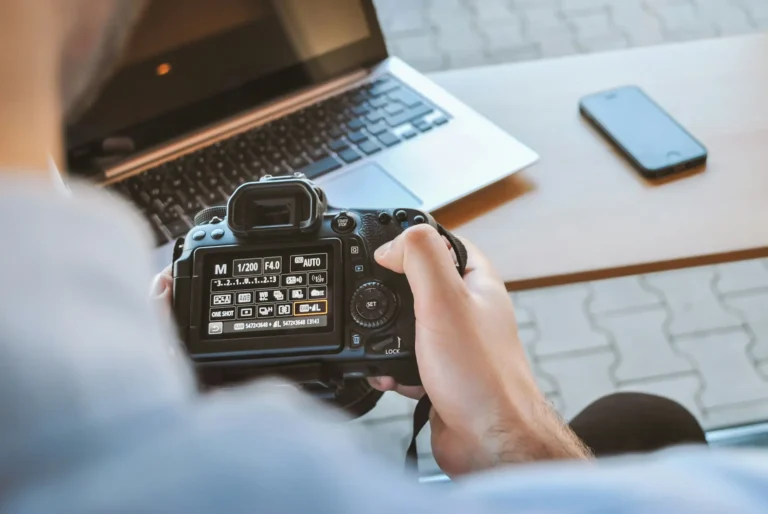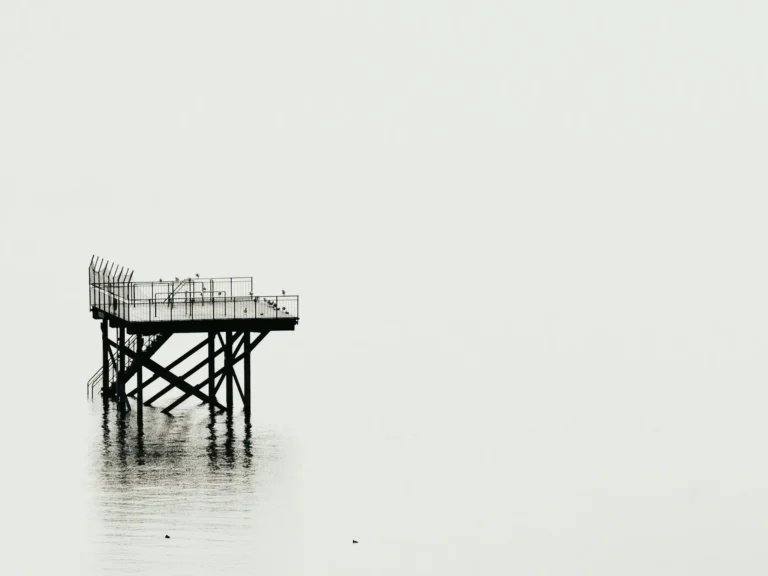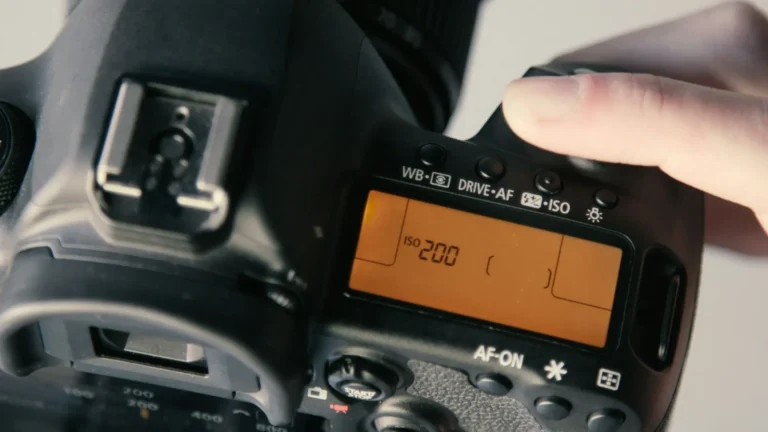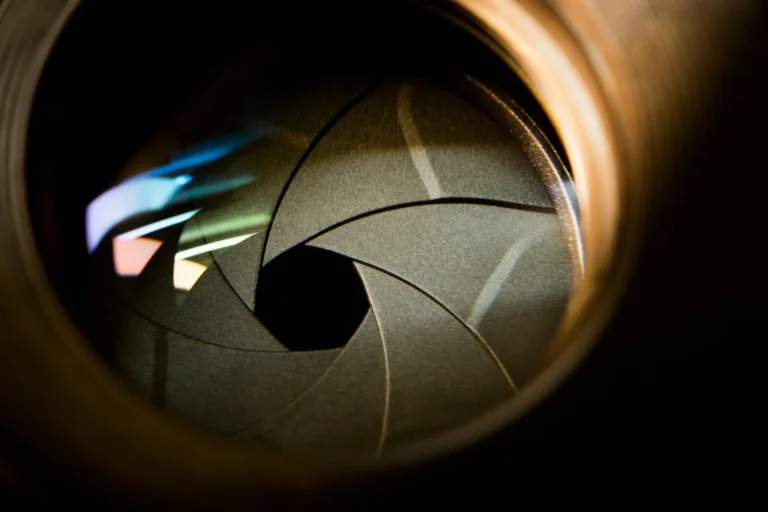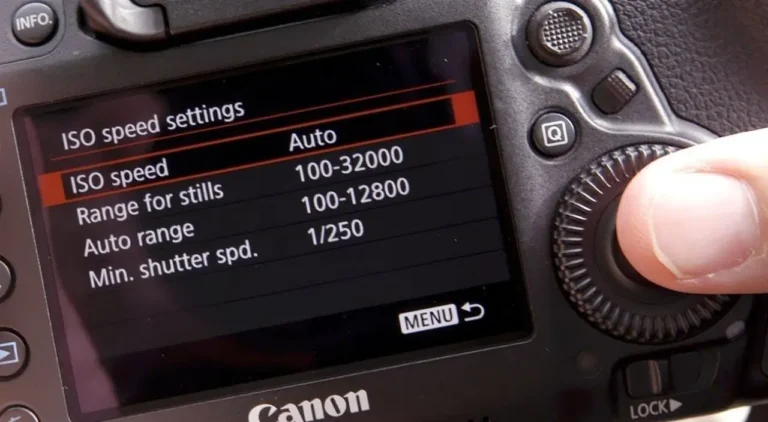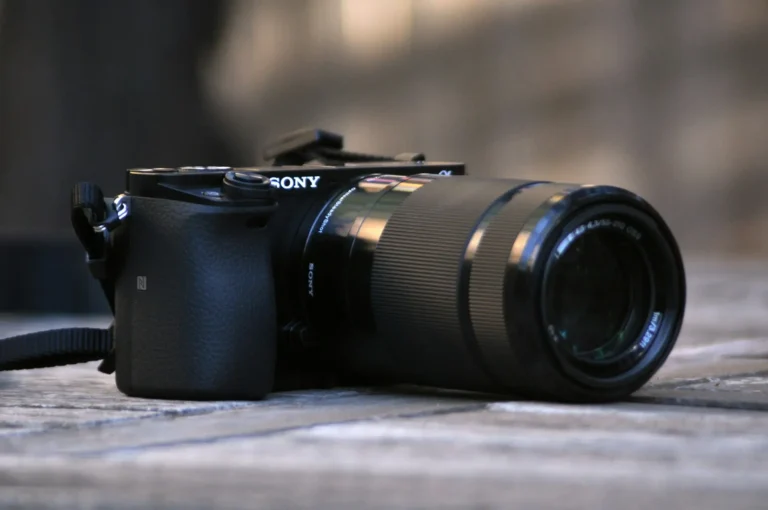Photography, the art of capturing light to create images, has evolved tremendously since its invention by Daguerre in the early 19th century. From traditional film cameras to modern digital technology, photography has become integral to our daily lives.
Photography’s journey from its humble beginnings with Daguerre to becoming a ubiquitous form of visual expression is remarkable. We’ll uncover how it has shaped historical documentation, artistic expression, and personal memories. We’ll discuss various genres, such as portrait, landscape, and street photography, while highlighting tips for beginners and enthusiasts alike.
Key Takeaways
- Embrace the evolution of photography by staying updated with new technologies and trends to enhance your skills and creativity.
- Invest in quality photography equipment that suits your style and genre, ensuring it meets your needs and budget.
- Master various techniques, such as composition, lighting, and perspective, to capture stunning images and elevate the impact of your photos.
- Explore different genres and styles of photography to find your niche and develop a unique and recognizable signature in your work.
- Experiment with creative photography ideas and concepts to bring your images a fresh perspective and artistic flair.
- Utilize post-processing techniques effectively to enhance and refine your photographs, maintaining a balance between artistic expression and authenticity.

Photography Evolution
History and Pioneers
Photography has come a long way since the first permanent photograph was captured in 1826 by Joseph Nicéphore Niépce in France. In its early days, photography was a complex and time-consuming process involving large cameras and long exposure times. Over time, pioneers like Louis Daguerre and William Henry Fox Talbot made significant contributions to the development of photography. Daguerre’s invention of the daguerreotype process in 1839 revolutionized image making, while Talbot’s calotype process introduced the concept of negative-positive printing.
The evolution of photography technology has been marked by several key milestones that have transformed how images are captured and preserved. From the invention of roll film by George Eastman in the late 19th century to Kodak’s introduction of the Brownie camera in 1900, each advancement brought photography closer to becoming accessible to a broader audience. The transition from glass plate negatives to flexible film made cameras more portable and simplified image production processes.
Technology Evolution
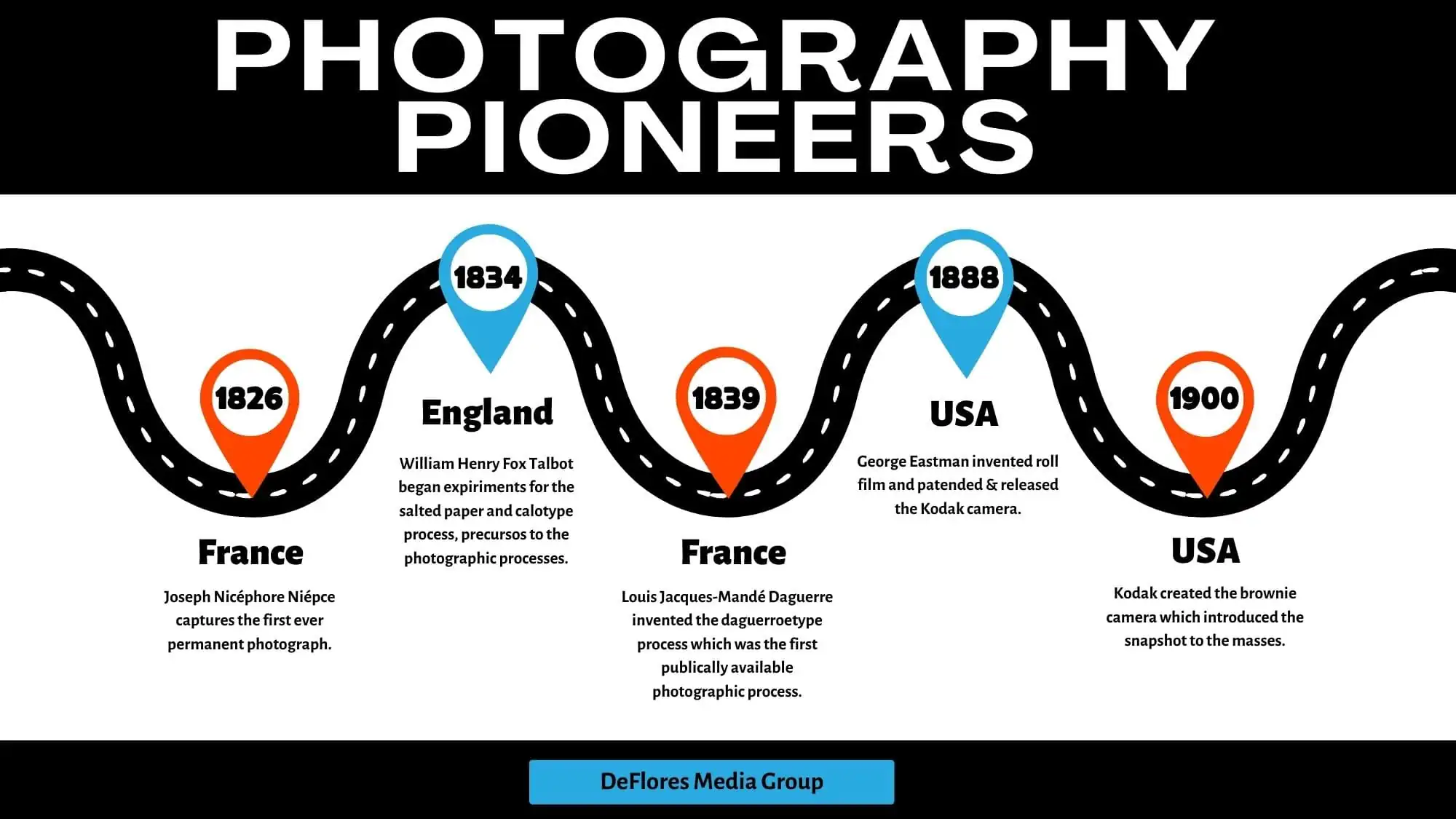
In recent decades, digital technology has reshaped the field with its ability to capture, store, edit, and share images electronically. The shift from traditional film-based cameras to digital ones has democratized photography by eliminating many barriers associated with film processing. Digital cameras allow photographers to instantly review their shots on an LCD screen before deciding whether or not they want to keep them.

Moreover, advancements such as autofocus systems, image stabilization technology, and high-resolution sensors have enhanced the precision and quality of digital photographs. These technological developments have enabled photographers at all skill levels—amateurs or professionals—to produce stunning images without requiring extensive technical knowledge or expertise.
Digital vs Non-Digital
The advent of digital photography brought about numerous advantages over non-digital methods. With digital cameras replacing traditional film-based ones and smartphones equipped with high-quality built-in lenses, photographers can now take an infinite number of pictures without worrying about running out of film rolls or storage space for printed photographs.
Furthermore, digital photos can be easily edited using various software applications, allowing photographers greater creative control over their work than developing prints in darkrooms. This labor-intensive process required specialized skills.
Photography Equipment
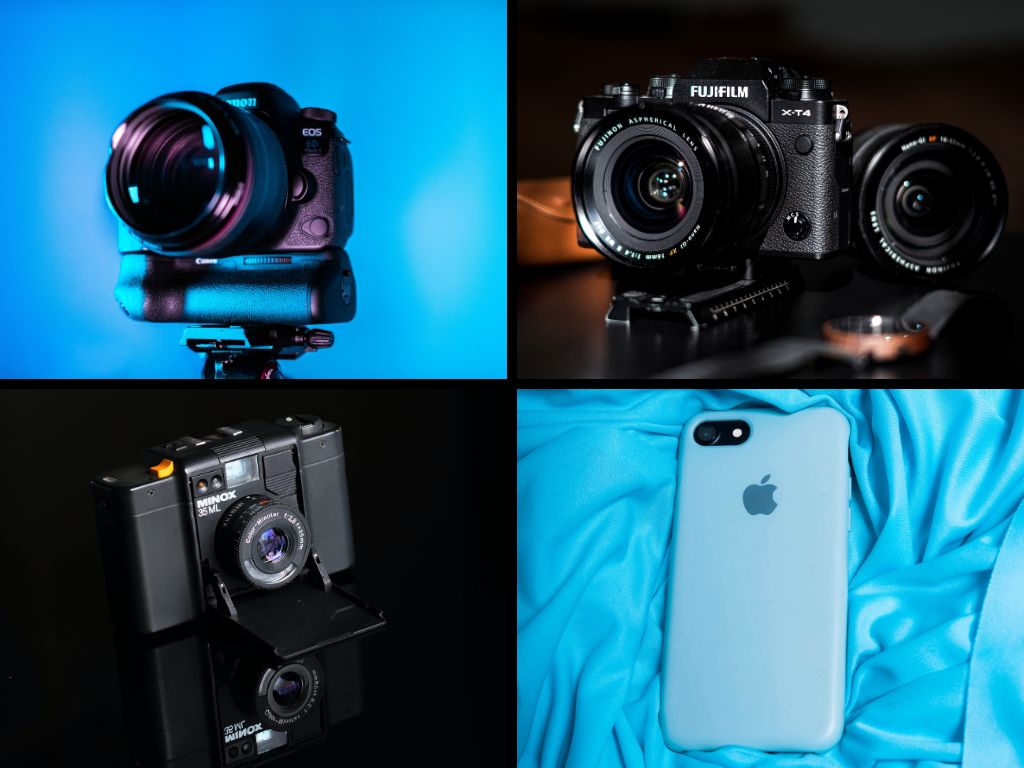
Camera Types
Photography involves different types of cameras, each suited for specific purposes. The DSLR (digital single-lens reflex) camera is popular among photographers due to its versatility and high image quality. It allows users to manually change lenses, adjust settings, and capture images with exceptional clarity. On the other hand, mirrorless cameras are gaining popularity for their compact size and advanced features. They offer similar capabilities to DSLRs but without the bulky mirror system.
Furthermore, point-and-shoot cameras provide convenience and ease of use for beginners or casual photographers. These compact devices are lightweight and often have automatic settings that make capturing moments effortless. Smartphone cameras have become increasingly sophisticated, offering impressive image quality in a pocket-sized package.
Photography Techniques
Basic Settings
Understanding basic settings is crucial. The first setting to grasp is the aperture, which controls the amount of light entering the camera. A lower f-stop means a broader aperture and more light. Conversely, a higher f-stop results in a narrower aperture and less light.
Another fundamental setting is shutter speed, determining how long the camera’s shutter stays open when taking a photo. A faster shutter speed freezes motion effectively, while a slower one captures movement blur. Lastly, ISO measures the sensor’s sensitivity to light; increasing ISO brightens images but may introduce graininess.
To illustrate these settings’ impact, consider capturing a waterfall using different combinations of aperture and shutter speed. With a narrow aperture (higher f-stop) and slow shutter speed, you can create silky water effects due to longer exposure time.
High-Speed Motion
Capturing high-speed motion requires specific techniques for stunning results. To freeze fast-moving subjects like sports or wildlife, opt for a fast shutter speed—around 1/1000th of a second or even faster—to avoid blurring.
Continuous shooting mode allows you to capture multiple frames per second during action-packed scenes such as basketball games or bird flights. This technique increases your chances of obtaining that perfect shot amidst rapid movements.
For example, photographing birds in flight at an airshow with continuous shooting mode enabled at a high-speed burst rate can help ensure sharp images despite their swift motions.
Night Photography
Nighttime presents unique opportunities for photography but demands distinct techniques due to low light conditions. When shooting at night or in dimly lit environments, use longer exposures by considerably slowing down the shutter speed—a few seconds instead of fractions of seconds—to allow enough light into the camera.
Moreover, employing a tripod becomes essential for stability during prolonged exposures since handheld shots easily result in blurriness from natural hand movements over extended periods.
Consider capturing cityscapes with dazzling lights against dark skies using long exposure times and tripods for steady shots without unwanted shaking.
Genres and Styles
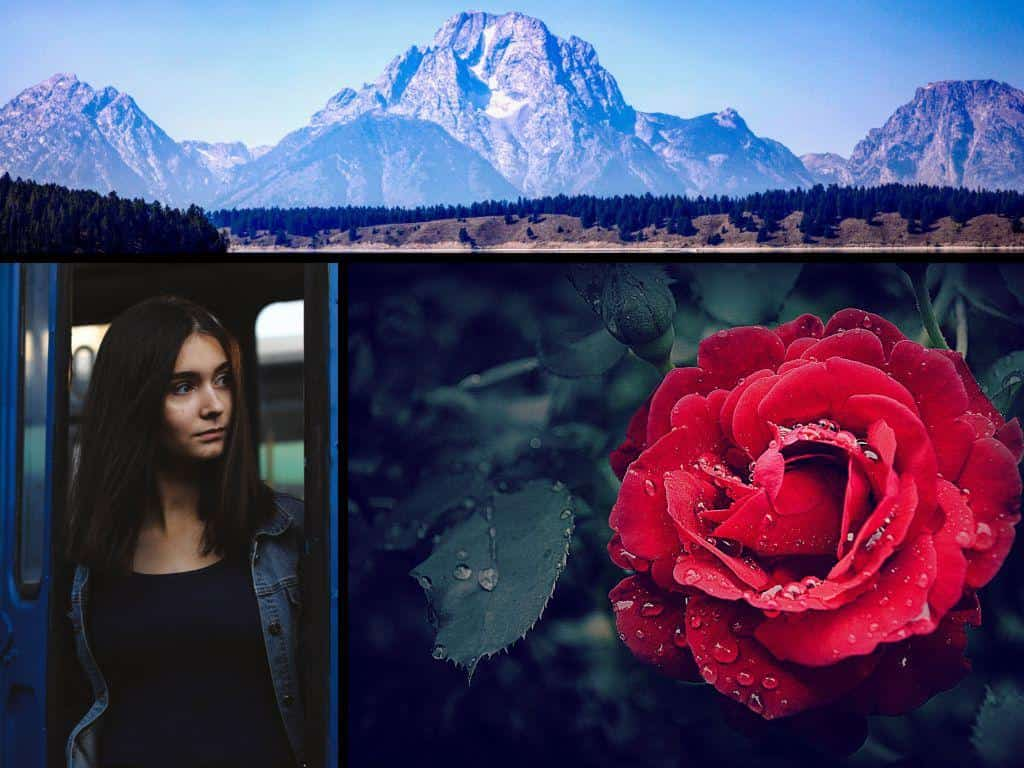
Artistic genres
Photography encompasses various artistic genres that allow photographers to express their creativity differently. For instance, portrait photography focuses on capturing the essence of a person, often highlighting their emotions or personality. On the other hand, landscape photography involves capturing vast outdoor scenes, such as mountains, forests, or seascapes. Another popular genre is macro photography, which takes extreme close-up shots of small subjects like insects or flowers.
Each artistic genre requires a unique set of skills and techniques. Portrait photographers must establish rapport with their subjects to capture genuine expressions and emotions. Meanwhile, landscape photographers must have an eye for composition and lighting to showcase nature’s beauty effectively. Macro photographers need steady hands and patience to capture tiny details without blurring the image.
Artistic genres also offer diverse opportunities for experimentation with different styles and approaches. For example, while some portrait photographers prefer traditional studio setups with controlled lighting, others may opt for candid shots in natural settings to convey authenticity.
Documentary photography
Documentary photography is a powerful storytelling tool that captures real-life events and situations without manipulation or staging. This genre aims to document significant moments in history or everyday life through compelling visual narratives.
Authenticity is paramount – images should accurately represent the subject matter without alteration or embellishment. Photojournalism is a prominent form of documentary photography that often covers news events, social issues, and human interest stories.
Documentary photographers must possess solid observational skills and empathy towards their subjects to depict reality sensitively yet truthfully through their lens. They often work under unpredictable conditions but manage to convey impactful stories through their photographs.
Modernist influence
The evolution of modernist influence has significantly shaped contemporary photographic styles by emphasizing innovation and experimentation over traditional conventions. Modernist photographers sought new ways to interpret reality through abstract compositions and unconventional perspectives.
This movement encouraged artists to break free from established norms to express individual creativity boldly.
Creative Photography
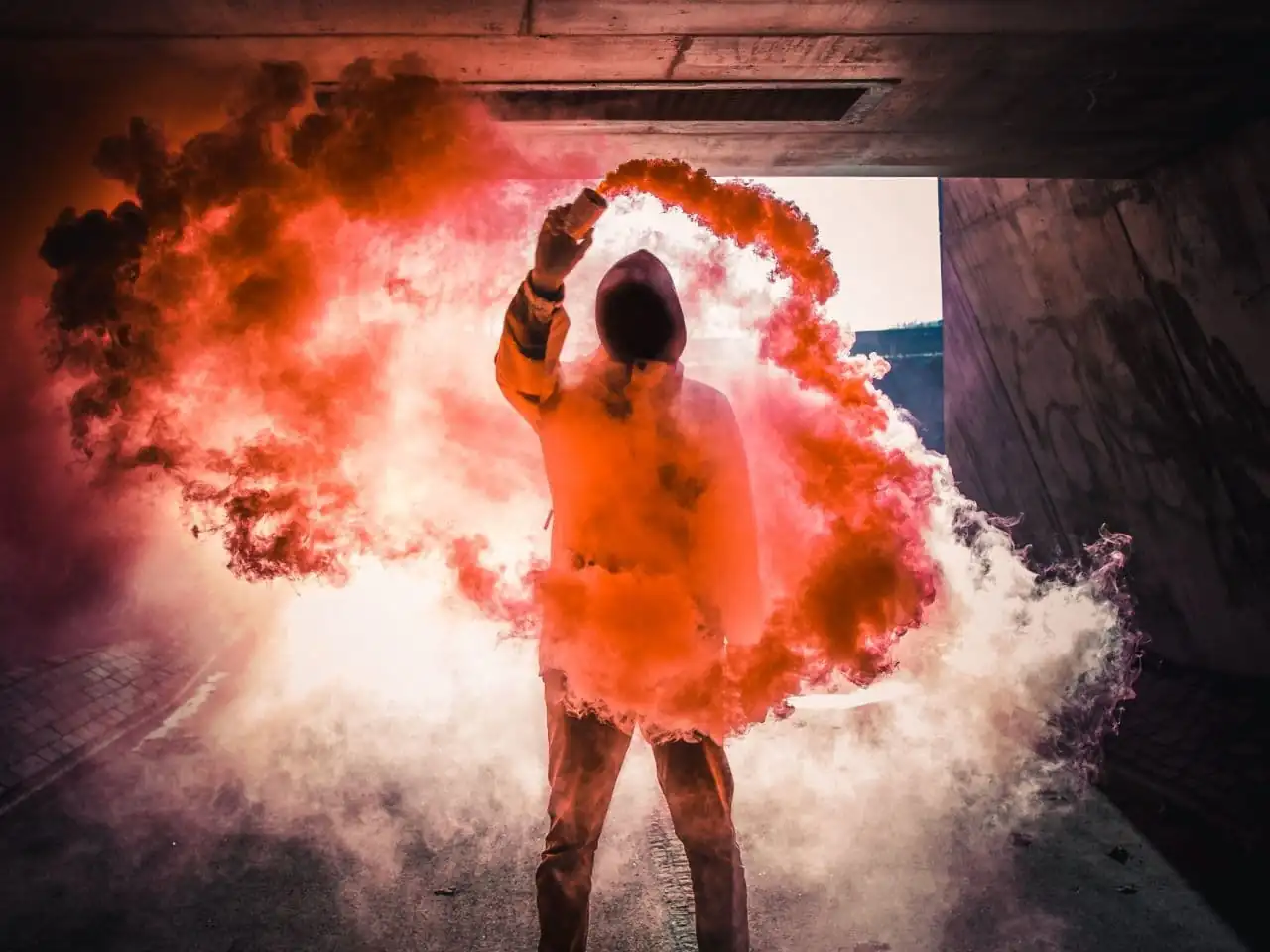
Smoke Art
Smoke art photography involves capturing the intricate patterns and shapes formed by smoke. By using a dark background and lighting the smoke from the side, photographers can create mesmerizing images that resemble abstract art. The key is to experiment with different light sources, angles, and colored backgrounds to produce unique and captivating compositions.
This form allows for endless creativity as each smoke pattern is unpredictable, resulting in one-of-a-kind images every time. One can play with various editing techniques, such as color manipulation or adding textures to enhance the visual impact of the photographs further. For instance, adjusting contrast levels can bring out hidden details within the wisps of smoke.

Macro Photography
In macro photography, photographers capture extreme close-up shots of small subjects, revealing intricate details that are often overlooked by the naked eye. This style is perfect for showcasing nature’s beauty at a micro level – from delicate flower petals to tiny insects. To achieve stunning macro shots, it’s crucial to invest in specialized lenses designed for close-up shooting and practice patience when working with such small subjects.
The magic lies in exploring everyday objects from an entirely new perspective through this photographic technique. For example, capturing water droplets on a leaf after rainfall or zooming in on the texture of a butterfly’s wings can result in visually striking images that evoke curiosity and wonder.
Panoramic Essentials
Photographers need to focus on seamlessly stitching together multiple images into a single wide-angle composition that captures breathtaking landscapes or cityscapes. Utilizing dedicated panoramic equipment like tripod heads designed explicitly for panoramic shooting ensures precise alignment between each frame for flawless merging later during post-processing.
The goal here is not just about fitting more into one photograph but also about conveying an immersive sense of space and grandeur through these expansive vistas. By mastering panoramic photography techniques such as panning smoothly across scenes while maintaining consistent exposure settings throughout all frames will help achieve professional-grade results.
Post-Processing Techniques
RAW Processing


RAW processing is an essential step in refining the quality of your photographs. When you shoot in RAW format, you capture all the data recorded by your camera’s sensor, providing more flexibility during post-processing. This means you can adjust exposure, color balance, and sharpness without compromising image quality. For instance, if a photo appears too dark or lacks vibrancy, RAW processing allows for significant improvements.
Engaging with the preceding section on “Creative Photography,” think of RAW processing as enhancing the raw material before transforming it into a masterpiece. It’s like adding spices to a dish to bring out its full flavor – making subtle adjustments that elevate the overall outcome.
Photography in Society
Cultural Impact
Photography plays a significant role in shaping cultural norms and values. It captures moments, emotions, and experiences that reflect the diversity of human life. Through this medium, people can preserve their traditions, customs, and heritage for future generations to witness. For instance, photographs of traditional ceremonies or festivals serve as visual records of cultural practices.
Moreover, photography allows individuals to share their unique perspectives with the world. By capturing everyday life or extraordinary events, photographers contribute to a collective understanding of different cultures and societies. This exchange of visual information fosters empathy and appreciation for diverse communities worldwide.
Furthermore, photography has the power to challenge societal norms by shedding light on social issues such as inequality, discrimination, or environmental concerns. Photographs documenting these issues can spark conversations and inspire change within communities.
Legal Aspects
In today’s digital age, legal considerations are crucial. Understanding copyright laws is essential for both amateur and professional photographers alike. Respect for intellectual property rights ensures that creators receive recognition and compensation for their work.
Privacy laws must be upheld when taking photographs in public spaces or private properties. Respecting individuals’ right to privacy is fundamental in ethical photography practice.
Furthermore, commercial usage rights should be carefully navigated by photographers who intend to sell their work or use it for promotional purposes.
Influential Movements
Throughout history, various influential movements have shaped the trajectory of photography as an art form and medium of expression. The emergence of documentary photography during the 20th century brought attention to social injustices through powerful images that captured real-life struggles.
The development of street photography also revolutionized how urban environments were portrayed visually. Street photographers sought spontaneity in everyday scenes while emphasizing raw human experiences within bustling cities.
Moreover, the rise of digital photography marked a significant shift in how images were captured and shared globally. The accessibility of digital cameras enabled more people to engage with photography, leading to diverse perspectives being showcased across online platforms.
Learning and Resources
For beginners
If you’re just starting out in photography, it’s essential to familiarize yourself with the basic concepts. Understanding composition, lighting, and framing is crucial for capturing visually appealing images. Start by experimenting with different settings on your camera or smartphone to get a feel for how they impact the final result. Consider enrolling in a beginner’s photography course either online or at a local community center. These courses often cover fundamental principles such as aperture, shutter speed, and ISO.
Furthermore, take into account the power of practice. Take your camera or smartphone with you wherever you go and capture various subjects from different angles. This hands-on experience will help reinforce what you’ve learned from tutorials or courses. As a beginner, it’s also beneficial to seek feedback from more experienced photographers through online communities or social media platforms like Instagram.
Mobile foundations
For those who prefer using their smartphones for photography, there are plenty of resources available to enhance your skills specifically tailored for mobile devices. Numerous apps offer advanced features that can elevate your mobile photography game significantly without requiring expensive equipment. From manual exposure control to professional-grade editing tools, these apps provide an array of options for creating stunning images.
Moreover, investing in clip-on lenses designed for smartphones can expand the creative possibilities even further by allowing you to experiment with different focal lengths and perspectives without having to invest in a separate camera system. There are countless online tutorials dedicated solely to maximizing the potential of smartphone cameras through innovative techniques such as long-exposure photography and creative editing tricks using specialized apps.
Learning resources
There is no shortage of resources available both online and offline, catering to all skill levels – from beginners seeking foundational knowledge to seasoned professionals looking for inspiration and advanced techniques. Online platforms like YouTube host an abundance of tutorials covering everything from mastering specific camera models to post-processing tips using software like Adobe Photoshop or Lightroom.
In addition to video content, many websites offer comprehensive articles written by industry experts discussing various aspects of photography, including gear reviews, shooting techniques, composition guidelines, and more. Subscribing to reputable photography magazines can also provide valuable insights into current trends within the industry while showcasing exceptional work by established photographers worldwide.
Photography Business Essentials
Business Basics
Starting a photography business requires more than just technical skills. Understanding the basics of business is crucial. This includes setting up a business plan, creating a budget, and understanding marketing strategies.
A well-defined business plan helps outline your goals, target audience, competition analysis, and financial projections. It’s like a roadmap that guides you through the journey of establishing and growing your photography business. Having a clear budget ensures that you allocate funds for equipment, marketing efforts, and other essential expenses without overspending.
Utilizing social media platforms can be incredibly beneficial for photographers. Platforms like Instagram are visually driven, which makes them perfect for showcasing your work to potential clients. Engaging with your audience through posts and stories can help build brand awareness and attract new customers.
Summary
You’ve just taken a whirlwind tour through the fascinating world of photography. From its evolution to the essential equipment, techniques, and styles, you’ve gained insights into the creative and technical aspects of this art form. Understanding the impact of photography on society and business essentials has provided a comprehensive view of its significance in our lives.
Now that you have a deeper understanding of photography, it’s time to pick up your camera and start capturing moments. Whether it’s experimenting with new techniques or exploring different genres, the best way to improve is by practicing. So, go out there, snap away, and let your creativity flow!
Frequently Asked Questions
What are the key milestones in the evolution of photography?
Photography has evolved from early camera obscura to modern digital technology. Key milestones include the invention of the first permanent photograph, the development of color photography, and the transition from film to digital.
How necessary is post-processing in photography?
Post-processing plays a crucial role in enhancing and refining photographs. It allows photographers to adjust exposure, color balance, and sharpness, bringing out the best in their images.
What are some essential pieces of equipment for amateur photographers?
Amateur photographers can start with a basic DSLR or mirrorless camera, a versatile lens such as a 50mm prime lens, a sturdy tripod for stability, and an external flash for low-light situations.
How does photography influence society?
Photography serves as a powerful medium for storytelling and documentation. It shapes public opinion, raises awareness about social issues, preserves cultural heritage, and provides insights into diverse perspectives.
What are some popular genres and styles of photography?
Popular genres include landscape photography, capturing scenic views; portrait photography, focusing on people; macro photography, highlighting intricate details; street photography, showcasing everyday life; and wildlife photography, capturing animals in their natural habitats.
Photography, the art of capturing light to create images, has evolved tremendously since its invention by Daguerre in the early 19th century. From traditional film cameras to modern digital technology, photography has become integral to our daily lives.
Photography’s journey from its humble beginnings with Daguerre to becoming a ubiquitous form of visual expression is remarkable. We’ll uncover how it has shaped historical documentation, artistic expression, and personal memories. We’ll discuss various genres, such as portrait, landscape, and street photography, while highlighting tips for beginners and enthusiasts alike.
Key Takeaways
- Embrace the evolution of photography by staying updated with new technologies and trends to enhance your skills and creativity.
- Invest in quality photography equipment that suits your style and genre, ensuring it meets your needs and budget.
- Master various techniques, such as composition, lighting, and perspective, to capture stunning images and elevate the impact of your photos.
- Explore different genres and styles of photography to find your niche and develop a unique and recognizable signature in your work.
- Experiment with creative photography ideas and concepts to bring your images a fresh perspective and artistic flair.
- Utilize post-processing techniques effectively to enhance and refine your photographs, maintaining a balance between artistic expression and authenticity.

Photography Evolution
History and Pioneers
Photography has come a long way since the first permanent photograph was captured in 1826 by Joseph Nicéphore Niépce in France. In its early days, photography was a complex and time-consuming process involving large cameras and long exposure times. Over time, pioneers like Louis Daguerre and William Henry Fox Talbot made significant contributions to the development of photography. Daguerre’s invention of the daguerreotype process in 1839 revolutionized image making, while Talbot’s calotype process introduced the concept of negative-positive printing.
The evolution of photography technology has been marked by several key milestones that have transformed how images are captured and preserved. From the invention of roll film by George Eastman in the late 19th century to Kodak’s introduction of the Brownie camera in 1900, each advancement brought photography closer to becoming accessible to a broader audience. The transition from glass plate negatives to flexible film made cameras more portable and simplified image production processes.
Technology Evolution

In recent decades, digital technology has reshaped the field with its ability to capture, store, edit, and share images electronically. The shift from traditional film-based cameras to digital ones has democratized photography by eliminating many barriers associated with film processing. Digital cameras allow photographers to instantly review their shots on an LCD screen before deciding whether or not they want to keep them.

Moreover, advancements such as autofocus systems, image stabilization technology, and high-resolution sensors have enhanced the precision and quality of digital photographs. These technological developments have enabled photographers at all skill levels—amateurs or professionals—to produce stunning images without requiring extensive technical knowledge or expertise.
Digital vs Non-Digital
The advent of digital photography brought about numerous advantages over non-digital methods. With digital cameras replacing traditional film-based ones and smartphones equipped with high-quality built-in lenses, photographers can now take an infinite number of pictures without worrying about running out of film rolls or storage space for printed photographs.
Furthermore, digital photos can be easily edited using various software applications, allowing photographers greater creative control over their work than developing prints in darkrooms. This labor-intensive process required specialized skills.
Photography Equipment

Camera Types
Photography involves different types of cameras, each suited for specific purposes. The DSLR (digital single-lens reflex) camera is popular among photographers due to its versatility and high image quality. It allows users to manually change lenses, adjust settings, and capture images with exceptional clarity. On the other hand, mirrorless cameras are gaining popularity for their compact size and advanced features. They offer similar capabilities to DSLRs but without the bulky mirror system.
Furthermore, point-and-shoot cameras provide convenience and ease of use for beginners or casual photographers. These compact devices are lightweight and often have automatic settings that make capturing moments effortless. Smartphone cameras have become increasingly sophisticated, offering impressive image quality in a pocket-sized package.
Photography Techniques
Basic Settings
Understanding basic settings is crucial. The first setting to grasp is the aperture, which controls the amount of light entering the camera. A lower f-stop means a broader aperture and more light. Conversely, a higher f-stop results in a narrower aperture and less light.
Another fundamental setting is shutter speed, determining how long the camera’s shutter stays open when taking a photo. A faster shutter speed freezes motion effectively, while a slower one captures movement blur. Lastly, ISO measures the sensor’s sensitivity to light; increasing ISO brightens images but may introduce graininess.
To illustrate these settings’ impact, consider capturing a waterfall using different combinations of aperture and shutter speed. With a narrow aperture (higher f-stop) and slow shutter speed, you can create silky water effects due to longer exposure time.
High-Speed Motion
Capturing high-speed motion requires specific techniques for stunning results. To freeze fast-moving subjects like sports or wildlife, opt for a fast shutter speed—around 1/1000th of a second or even faster—to avoid blurring.
Continuous shooting mode allows you to capture multiple frames per second during action-packed scenes such as basketball games or bird flights. This technique increases your chances of obtaining that perfect shot amidst rapid movements.
For example, photographing birds in flight at an airshow with continuous shooting mode enabled at a high-speed burst rate can help ensure sharp images despite their swift motions.
Night Photography
Nighttime presents unique opportunities for photography but demands distinct techniques due to low light conditions. When shooting at night or in dimly lit environments, use longer exposures by considerably slowing down the shutter speed—a few seconds instead of fractions of seconds—to allow enough light into the camera.
Moreover, employing a tripod becomes essential for stability during prolonged exposures since handheld shots easily result in blurriness from natural hand movements over extended periods.
Consider capturing cityscapes with dazzling lights against dark skies using long exposure times and tripods for steady shots without unwanted shaking.
Genres and Styles

Artistic genres
Photography encompasses various artistic genres that allow photographers to express their creativity differently. For instance, portrait photography focuses on capturing the essence of a person, often highlighting their emotions or personality. On the other hand, landscape photography involves capturing vast outdoor scenes, such as mountains, forests, or seascapes. Another popular genre is macro photography, which takes extreme close-up shots of small subjects like insects or flowers.
Each artistic genre requires a unique set of skills and techniques. Portrait photographers must establish rapport with their subjects to capture genuine expressions and emotions. Meanwhile, landscape photographers must have an eye for composition and lighting to showcase nature’s beauty effectively. Macro photographers need steady hands and patience to capture tiny details without blurring the image.
Artistic genres also offer diverse opportunities for experimentation with different styles and approaches. For example, while some portrait photographers prefer traditional studio setups with controlled lighting, others may opt for candid shots in natural settings to convey authenticity.
Documentary photography
Documentary photography is a powerful storytelling tool that captures real-life events and situations without manipulation or staging. This genre aims to document significant moments in history or everyday life through compelling visual narratives.
Authenticity is paramount – images should accurately represent the subject matter without alteration or embellishment. Photojournalism is a prominent form of documentary photography that often covers news events, social issues, and human interest stories.
Documentary photographers must possess solid observational skills and empathy towards their subjects to depict reality sensitively yet truthfully through their lens. They often work under unpredictable conditions but manage to convey impactful stories through their photographs.
Modernist influence
The evolution of modernist influence has significantly shaped contemporary photographic styles by emphasizing innovation and experimentation over traditional conventions. Modernist photographers sought new ways to interpret reality through abstract compositions and unconventional perspectives.
This movement encouraged artists to break free from established norms to express individual creativity boldly.
Creative Photography

Smoke Art
Smoke art photography involves capturing the intricate patterns and shapes formed by smoke. By using a dark background and lighting the smoke from the side, photographers can create mesmerizing images that resemble abstract art. The key is to experiment with different light sources, angles, and colored backgrounds to produce unique and captivating compositions.
This form allows for endless creativity as each smoke pattern is unpredictable, resulting in one-of-a-kind images every time. One can play with various editing techniques, such as color manipulation or adding textures to enhance the visual impact of the photographs further. For instance, adjusting contrast levels can bring out hidden details within the wisps of smoke.

Macro Photography
In macro photography, photographers capture extreme close-up shots of small subjects, revealing intricate details that are often overlooked by the naked eye. This style is perfect for showcasing nature’s beauty at a micro level – from delicate flower petals to tiny insects. To achieve stunning macro shots, it’s crucial to invest in specialized lenses designed for close-up shooting and practice patience when working with such small subjects.
The magic lies in exploring everyday objects from an entirely new perspective through this photographic technique. For example, capturing water droplets on a leaf after rainfall or zooming in on the texture of a butterfly’s wings can result in visually striking images that evoke curiosity and wonder.
Panoramic Essentials
Photographers need to focus on seamlessly stitching together multiple images into a single wide-angle composition that captures breathtaking landscapes or cityscapes. Utilizing dedicated panoramic equipment like tripod heads designed explicitly for panoramic shooting ensures precise alignment between each frame for flawless merging later during post-processing.
The goal here is not just about fitting more into one photograph but also about conveying an immersive sense of space and grandeur through these expansive vistas. By mastering panoramic photography techniques such as panning smoothly across scenes while maintaining consistent exposure settings throughout all frames will help achieve professional-grade results.
Post-Processing Techniques
RAW Processing


RAW processing is an essential step in refining the quality of your photographs. When you shoot in RAW format, you capture all the data recorded by your camera’s sensor, providing more flexibility during post-processing. This means you can adjust exposure, color balance, and sharpness without compromising image quality. For instance, if a photo appears too dark or lacks vibrancy, RAW processing allows for significant improvements.
Engaging with the preceding section on “Creative Photography,” think of RAW processing as enhancing the raw material before transforming it into a masterpiece. It’s like adding spices to a dish to bring out its full flavor – making subtle adjustments that elevate the overall outcome.
Photography in Society
Cultural Impact
Photography plays a significant role in shaping cultural norms and values. It captures moments, emotions, and experiences that reflect the diversity of human life. Through this medium, people can preserve their traditions, customs, and heritage for future generations to witness. For instance, photographs of traditional ceremonies or festivals serve as visual records of cultural practices.
Moreover, photography allows individuals to share their unique perspectives with the world. By capturing everyday life or extraordinary events, photographers contribute to a collective understanding of different cultures and societies. This exchange of visual information fosters empathy and appreciation for diverse communities worldwide.
Furthermore, photography has the power to challenge societal norms by shedding light on social issues such as inequality, discrimination, or environmental concerns. Photographs documenting these issues can spark conversations and inspire change within communities.
Legal Aspects
In today’s digital age, legal considerations are crucial. Understanding copyright laws is essential for both amateur and professional photographers alike. Respect for intellectual property rights ensures that creators receive recognition and compensation for their work.
Privacy laws must be upheld when taking photographs in public spaces or private properties. Respecting individuals’ right to privacy is fundamental in ethical photography practice.
Furthermore, commercial usage rights should be carefully navigated by photographers who intend to sell their work or use it for promotional purposes.
Influential Movements
Throughout history, various influential movements have shaped the trajectory of photography as an art form and medium of expression. The emergence of documentary photography during the 20th century brought attention to social injustices through powerful images that captured real-life struggles.
The development of street photography also revolutionized how urban environments were portrayed visually. Street photographers sought spontaneity in everyday scenes while emphasizing raw human experiences within bustling cities.
Moreover, the rise of digital photography marked a significant shift in how images were captured and shared globally. The accessibility of digital cameras enabled more people to engage with photography, leading to diverse perspectives being showcased across online platforms.
Learning and Resources
For beginners
If you’re just starting out in photography, it’s essential to familiarize yourself with the basic concepts. Understanding composition, lighting, and framing is crucial for capturing visually appealing images. Start by experimenting with different settings on your camera or smartphone to get a feel for how they impact the final result. Consider enrolling in a beginner’s photography course either online or at a local community center. These courses often cover fundamental principles such as aperture, shutter speed, and ISO.
Furthermore, take into account the power of practice. Take your camera or smartphone with you wherever you go and capture various subjects from different angles. This hands-on experience will help reinforce what you’ve learned from tutorials or courses. As a beginner, it’s also beneficial to seek feedback from more experienced photographers through online communities or social media platforms like Instagram.
Mobile foundations
For those who prefer using their smartphones for photography, there are plenty of resources available to enhance your skills specifically tailored for mobile devices. Numerous apps offer advanced features that can elevate your mobile photography game significantly without requiring expensive equipment. From manual exposure control to professional-grade editing tools, these apps provide an array of options for creating stunning images.
Moreover, investing in clip-on lenses designed for smartphones can expand the creative possibilities even further by allowing you to experiment with different focal lengths and perspectives without having to invest in a separate camera system. There are countless online tutorials dedicated solely to maximizing the potential of smartphone cameras through innovative techniques such as long-exposure photography and creative editing tricks using specialized apps.
Learning resources
There is no shortage of resources available both online and offline, catering to all skill levels – from beginners seeking foundational knowledge to seasoned professionals looking for inspiration and advanced techniques. Online platforms like YouTube host an abundance of tutorials covering everything from mastering specific camera models to post-processing tips using software like Adobe Photoshop or Lightroom.
In addition to video content, many websites offer comprehensive articles written by industry experts discussing various aspects of photography, including gear reviews, shooting techniques, composition guidelines, and more. Subscribing to reputable photography magazines can also provide valuable insights into current trends within the industry while showcasing exceptional work by established photographers worldwide.
Photography Business Essentials
Business Basics
Starting a photography business requires more than just technical skills. Understanding the basics of business is crucial. This includes setting up a business plan, creating a budget, and understanding marketing strategies.
A well-defined business plan helps outline your goals, target audience, competition analysis, and financial projections. It’s like a roadmap that guides you through the journey of establishing and growing your photography business. Having a clear budget ensures that you allocate funds for equipment, marketing efforts, and other essential expenses without overspending.
Utilizing social media platforms can be incredibly beneficial for photographers. Platforms like Instagram are visually driven, which makes them perfect for showcasing your work to potential clients. Engaging with your audience through posts and stories can help build brand awareness and attract new customers.
Summary
You’ve just taken a whirlwind tour through the fascinating world of photography. From its evolution to the essential equipment, techniques, and styles, you’ve gained insights into the creative and technical aspects of this art form. Understanding the impact of photography on society and business essentials has provided a comprehensive view of its significance in our lives.
Now that you have a deeper understanding of photography, it’s time to pick up your camera and start capturing moments. Whether it’s experimenting with new techniques or exploring different genres, the best way to improve is by practicing. So, go out there, snap away, and let your creativity flow!
Frequently Asked Questions
What are the key milestones in the evolution of photography?
Photography has evolved from early camera obscura to modern digital technology. Key milestones include the invention of the first permanent photograph, the development of color photography, and the transition from film to digital.
How necessary is post-processing in photography?
Post-processing plays a crucial role in enhancing and refining photographs. It allows photographers to adjust exposure, color balance, and sharpness, bringing out the best in their images.
What are some essential pieces of equipment for amateur photographers?
Amateur photographers can start with a basic DSLR or mirrorless camera, a versatile lens such as a 50mm prime lens, a sturdy tripod for stability, and an external flash for low-light situations.
How does photography influence society?
Photography serves as a powerful medium for storytelling and documentation. It shapes public opinion, raises awareness about social issues, preserves cultural heritage, and provides insights into diverse perspectives.
What are some popular genres and styles of photography?
Popular genres include landscape photography, capturing scenic views; portrait photography, focusing on people; macro photography, highlighting intricate details; street photography, showcasing everyday life; and wildlife photography, capturing animals in their natural habitats.

